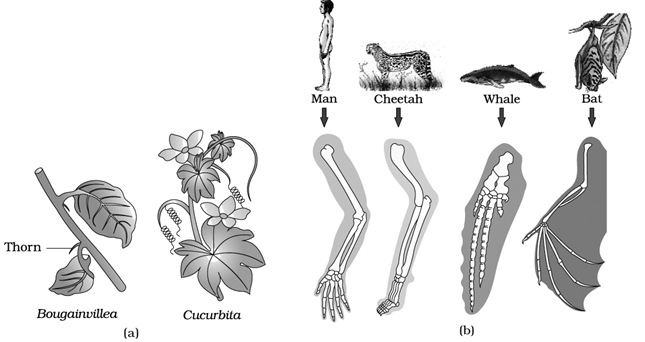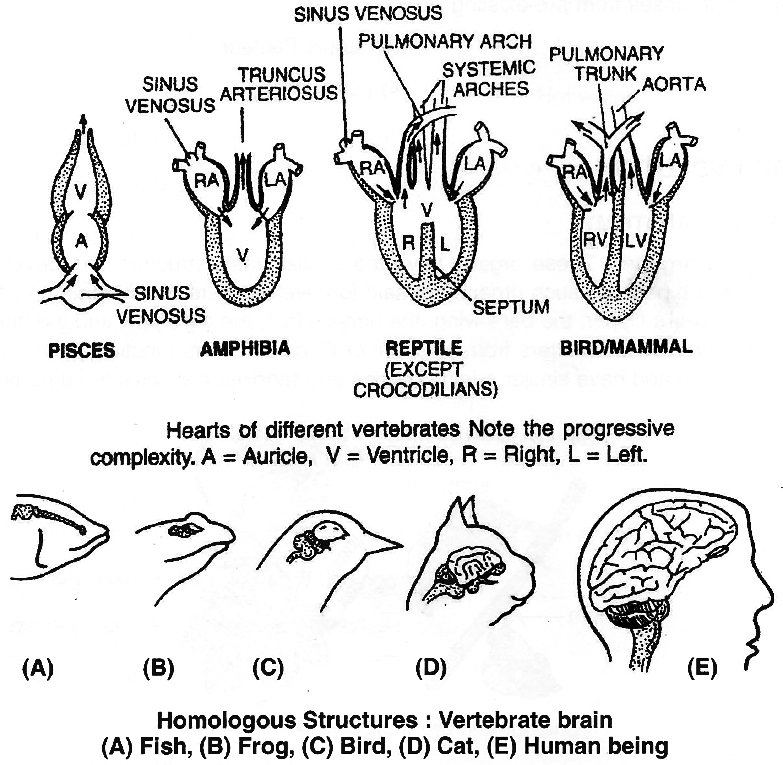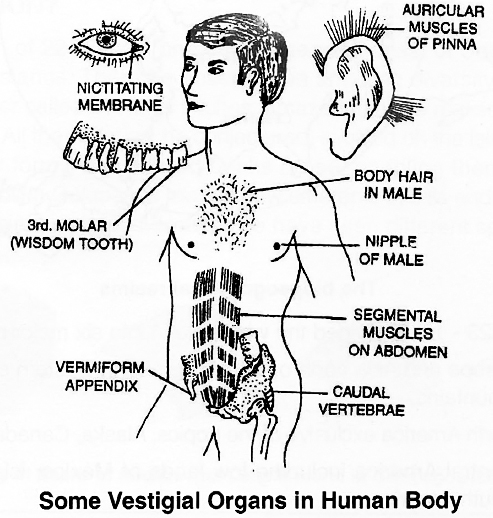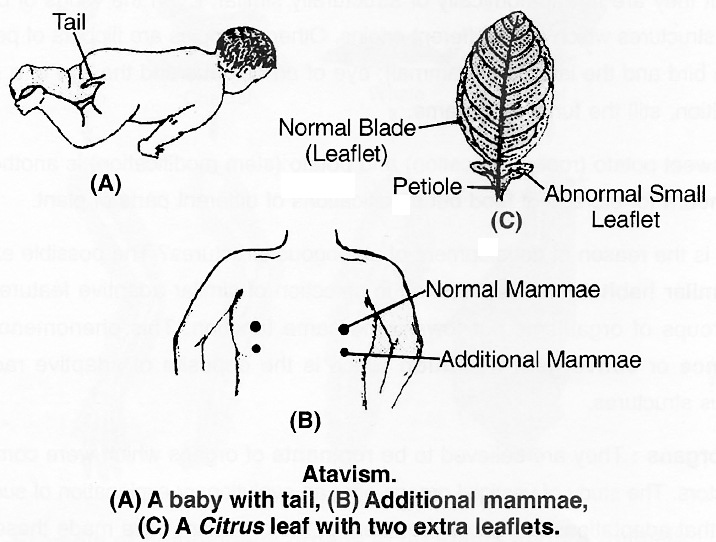- Books Name
- A TEXT OF BIOLOGY - CLASS XII
- Publication
- ACME SMART PUBLICATION
- Course
- CBSE Class 12
- Subject
- Biology
EVIDENCES OF EVOLUTION
1. EVIDENCES FROM ANATOMY
(i) Homologous organs :
These organs have the similar basic structure and developmental origin.
The organisms which possess such organs are said to have originated from common ancestor.
Consider, for example, the seal's flipper, the bat's wing, the horse's foot, the cat's paw and the human hand.
In plants, a thorn of Bougainvillaea differs from a tendril of Cucurbita in its function, both are located in a similar (axillary) position and have similar origin.
Thorns and tendrils are considered homologous.

Homologous organs show divergent evolution which means that the similar structures developed along different directions due to adaptions to different needs or Adaptive Radiation which is the development of dissimilar functional structures in closely related group of organisms.
(Homology indicates common ancestry. Other examples are comparison of heart and brain of vertebrates)

(ii) Analogous organs :
These organs which are not anatomically similar though they perform similar functions.
For example, the wings of birds and of butterfly look alike, they perform the similar function of flying but they are not anatomically or structurally similar.
Even the wings of birds and bats are also analogous structures which have different origins.
Other examples are flippers of penguin and dolphin (the former is a bird and the later is a mammal); eye of an octopus and the eye of a mammal, both differ in retinal position, still the function is same.
In plants, sweet potato (root modification) and potato (stem modification) is another example of analogy.
Both are meant for storage of food but modifications of different parts of plant.
Now, what is the reason of development of analogous structures?
The possible explanation may be that it is the similar habitat that has resulted in selection of similar adaptive features in different (distantly related) groups of organisms put toward the same function.
This phenomenon is termed adaptive convergence or convergent evolution which is the opposite of adaptive radiation as seen in the homologous structures.
(iii) Vestigial organs:
They are believed to be remnants of organs which were complete and functional in their ancestors.
The study of vestigial organs offer an evolutionary explanation of such rudimentary vestiges by stating that adaptations to new environment of the organism have made these structures redundant.
Such structures are called vestigial organs.
The rudiment of the reptilian jaw apparatus, the rudiment of the hind limbs of python and Greenland whales are some of the examples of vestigial organs.
In humans, many vestigial structures indicate a relationship to other mammals, including the primates.
For instance, muscles of the external ear and scalp are rudimentary and often non-functional.
But these are common to many mammals where they are functional.
The reduced tailbones and nictitating membrane of the eye, the appendix of the caecum, rudimentary body hair and wisdom teeth -all are examples of vestigial organs.
The appendix of man is thought to be a remnant of the large caecum -the storage organ for cellulose digestion in herbivorous mammals.
Similarly, the non-functional vestiges of the pelvic girdle in python and porpoise show, for instance, that the snake and the porpoise originally evolved from four footed ancestors.

(iv) Atavism:
Sudden reappearance of ancestral character is called atavism.
For example, tail in new born human baby.
The winged petiole of Citrus represents that the unifoliate condition is derived from the trifoliate leaf.


 ACME SMART PUBLICATION
ACME SMART PUBLICATION
